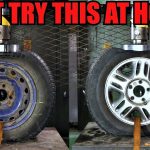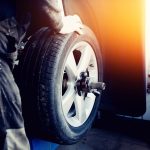Self-Supporting Tyres – run-Flat Car Tyres
Flat tyres never happen at a good time; most call roadside assistance. However, wait times can be long, and it can be difficult to change a tyre yourself if you don’t have the skills and tools to do the job. Thankfully, run-flat tyres solve most of these issues. A run-flat tyre can hold a vehicle’s weight long enough for you to get to the tyre sales. Below are the trade-offs you may encounter when using run-flat tyres.
Self-Supporting Tyres
Most run-flats sold today are self-supporting, which means that the sidewalls are sufficiently reinforced to support the car’s weight when air pressure is low or absent.
Advantages:
- You can drive up to 100 miles after the tyre is empty. However, you’ll have to reduce your speed to get the maximum distance. Your owner’s manual will have the correct figure for your application.
- Because run-flat tyres can hold your car up without air, a blowout won’t cause as much instability, and your handling will remain the same.
- Your vehicle will weigh less without needing repair tools and a spare tyre. However, the difference is negligible because run-flats weigh more than conventional tyres.
Disadvantages:
You won’t have a spare, so you won’t have the tools to replace a tyre either. Eliminating the spare, jack and other parts gives you more space, which is a good reason why automakers offer run-flat tyres.
- Due to the softer compound, run-flat tyres wear out sooner than conventional tyres.
- If you drive above the recommended speed or don’t heed warnings, your tyres can suddenly disintegrate.
- Punctures to the sidewall or impacts with large objects can render the run-flat tyre useless.
- It can be difficult to tell whether the Hankook tyres have low air pressure because the stiffer sidewalls don’t bulge. It’s important to have a TPMS (tyre pressure monitoring system) and to use it frequently.
Self-Sealing Tyres
Self-sealing tyres aren’t the same as run flats because they cannot operate without air. Alternatively, these tyres have a sealant layer that helps to retain air pressure after a puncture. If debris is removed, the sealant will fill the hole as long as it’s near the tread centre and under 5mm. Self-sealing tyres have the same tread life as conventional tyres and can be used interchangeably, but they are more expensive and less common.
Run-flat tyres have their benefits and drawbacks, but they are popular among many drivers. When looking for new tyres, read user reviews and learn which car tyres come as factory equipment. A little knowledge will help you make an informed decision.







